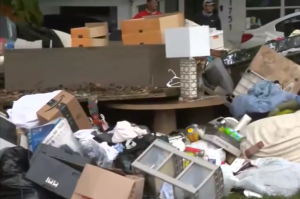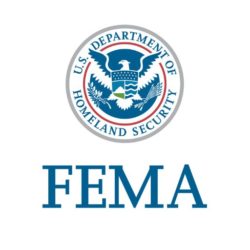FEMA releases data on Risk Rating 2.0
 Local officials decide against direct payments to households impacted by the historic April Broward County flooding, the National Flood Insurance Program is again pitching a plan for multi-year reauthorization, and while Congress wants more answers about Risk Rating 2.0, FEMA provides a peak behind the curtain with release of some datasets. It’s all in this week’s Flood Digest.
Local officials decide against direct payments to households impacted by the historic April Broward County flooding, the National Flood Insurance Program is again pitching a plan for multi-year reauthorization, and while Congress wants more answers about Risk Rating 2.0, FEMA provides a peak behind the curtain with release of some datasets. It’s all in this week’s Flood Digest.

Piles of ruined furniture sit outside a flooded Ft. Lauderdale home, May 3, 2023
Broward Flooding: FEMA field representatives went door-to-door last week in some of Ft. Lauderdale’s hardest hit neighborhoods helping residents sign-up for federal assistance for clean-up and repair of flood damage caused by nearly 26 inches of rainfall on April 12-13. It can include grants for temporary housing and home repairs, low-cost loans to cover uninsured property losses and other programs to help individuals and business owners recover from the disaster. But with the average FEMA payout traditionally being about $4,000, Ft. Lauderdale Mayor Dean Trantalis asked the city commission last week to consider paying affected households $5,000 to help make up the difference needed. It declined, citing logistical complexities and where it might find the $5+ million one commissioner estimated it would cost. FEMA said its payments to residents could begin as soon as late last week.

NFIP Senior Executive David Maurstad
NFIP Reauthorization: The head of FEMA’s National Flood Insurance Program, David Maurstad has been up on Capitol Hill over the past two weeks seeking reauthorization of the program that provides flood insurance to 4.7 million households. He’s been pitching the 17-point package of proposals FEMA first submitted in May 2022. Maurstad said there’s a “slim chance” the program will be able to survive over the next ten years without them. Included among the 17 are congressional forgiveness of the NFIP’s $20.5 billion debt, allowing low-income homeowners to purchase coverage at a discount, and allowing the NFIP to refuse coverage of Repetitive Loss Properties (RLP). About 350,000 policies have had two or more flood claims, with 10,000 of those flooded and repaired at least 10 times. Ten of the country’s top 20 costliest flood events have occurred since 2013.

FEMA Administrator Deanne Criswell
Risk Rating 2.0: The biggest of FEMA’s hurdles with Congress regards implementation of its Risk Rating 2.0. Last week, leaders from the House Committee on Oversight and Accountability sent a bipartisan letter to FEMA Administrator Deanne Criswell sharing their concerns. Among them, that FEMA has been “less than transparent” about Risk Rating 2.0, that the program is unaffordable to too many, with a resulting drop in policy count. They’re requesting that FEMA provide specifics about exactly how Risk Rating 2.0 determined its rates and how it rolled out the program.
 FEMA Sharing Data: FEMA is publishing some data on its flood insurance methodology. FEMA last week released more data on its Risk Rating 2.0 rate pricing methods. FEMA created exhibits to show the risk-based cost of flood insurance or the full actuarial rate for single-family homes under Risk Rating 2.0, using data from single-family policies renewed before Sept. 30, 2022. The exhibits will be updated and revised once all policyholders have renewed their policies under Risk Rating 2.0. Site visitors can view datasets at fema.gov/flood-insurance/work-with-nfip/risk-rating/single-family-home.
FEMA Sharing Data: FEMA is publishing some data on its flood insurance methodology. FEMA last week released more data on its Risk Rating 2.0 rate pricing methods. FEMA created exhibits to show the risk-based cost of flood insurance or the full actuarial rate for single-family homes under Risk Rating 2.0, using data from single-family policies renewed before Sept. 30, 2022. The exhibits will be updated and revised once all policyholders have renewed their policies under Risk Rating 2.0. Site visitors can view datasets at fema.gov/flood-insurance/work-with-nfip/risk-rating/single-family-home.
LMA Newsletter of 5-8-23

